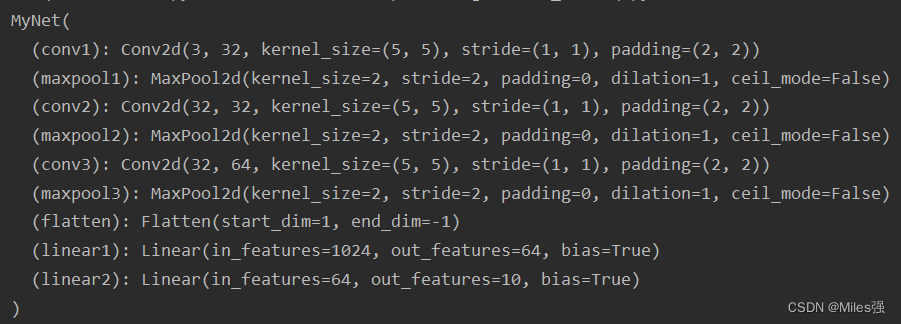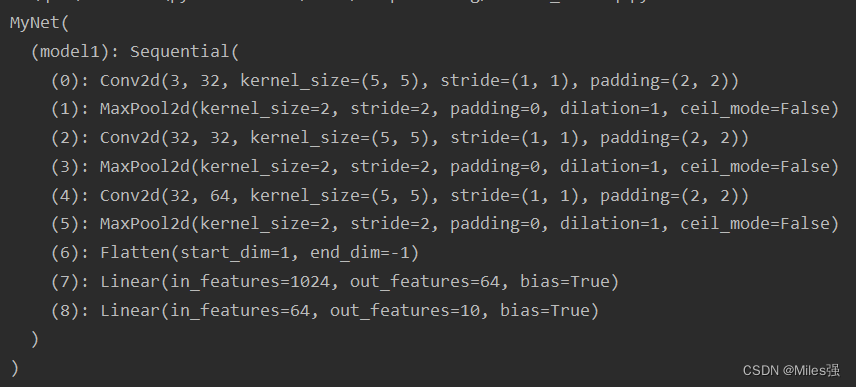torch.nn.Sequential是一个Sequential容器,模块将按照构造函数中传递的顺序添加到模块中.
一、通常情况构建网络
class MyNet(nn.Module):
def __init__(self):
super(MyNet, self).__init__()
self.conv1 = Conv2d(in_channels=3, out_channels=32, kernel_size=5, padding=2)
self.maxpool1 = MaxPool2d(2)
self.conv2 = Conv2d(32, 32, 5, padding=2)
self.maxpool2 = MaxPool2d(2)
self.conv3 = Conv2d(32, 64, 5, padding=2)
self.maxpool3 = MaxPool2d(2)
self.flatten = Flatten()
self.linear1 = Linear(1024, 64)
self.linear2 = Linear(64, 10)
def forward(self, x):
x = self.conv1(x)
x = self.maxpool1(x)
x = self.conv2(x)
x = self.maxpool2(x)
x = self.conv3(x)
x = self.maxpool3(x)
x = self.flatten(x)
x = self.linear1(x)
x = self.linear2(x)
return x
打印一下该神经网络:
MyNet = MyNet()
print(MyNet)

二、使用Sequential构建网络
class MyNet(nn.Module):
def __init__(self):
super(MyNet, self).__init__()
self.model1 = Sequential(
Conv2d(in_channels=3, out_channels=32, kernel_size=5, padding=2),
MaxPool2d(2),
Conv2d(32, 32, 5, padding=2),
MaxPool2d(2),
Conv2d(32, 64, 5, padding=2),
MaxPool2d(2),
Flatten(),
Linear(1024, 64),
Linear(64, 10),
)
def forward(self, x):
x = self.model1(x)
return x
打印一下该神经网络:
MyNet = MyNet()
print(MyNet)

方便操作
三、使用TensorBoard查看构建网络
input = torch.ones((64,3,32,32))
output = MyNet(input)
print(output.shape)
writer = SummaryWriter("p13")
writer.add_graph(MyNet,input)
writer.close()
